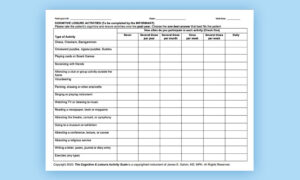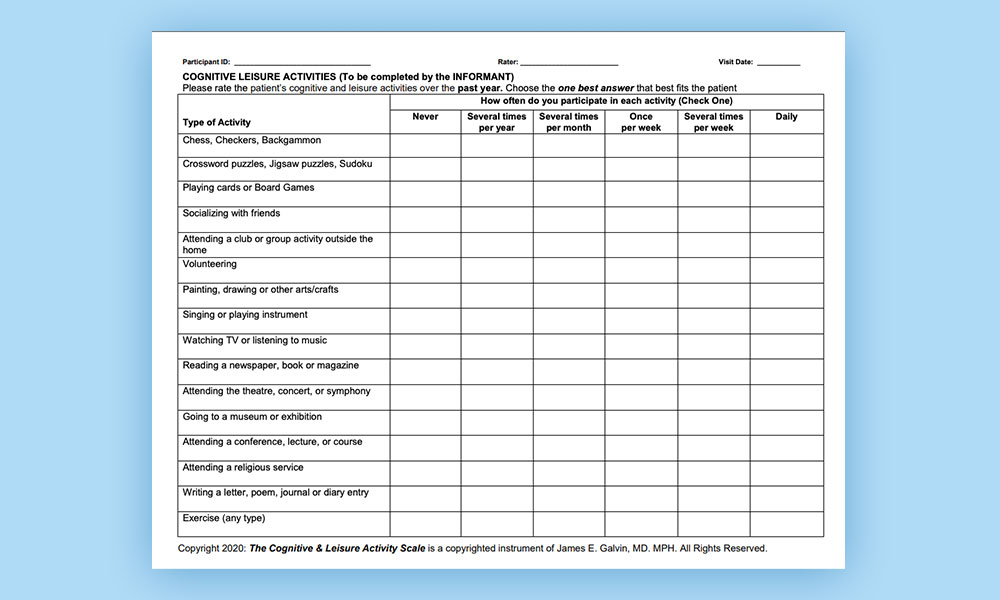Cognitive & Leisure Activities Scale (CLAS)

Description
Alzheimer’s disease and related disorders (ADRD) affects over 5 million Americans and incidence is expected to increase. In addition to cognitive impairment, over 31 million adults aged 50 and above are physically inactive and impaired physical performance may interfere with the ability to carry out activities of daily living (ADLs). The extent to which older adults are mentally and cognitively active is unknown. A large number of modifiable (e.g., exposures, lifestyle, and social habits) and nonmodifiable (e.g., age, sex, genetics) risk factors have been identified with up to 30% of the attributable risk of ADRD potentially preventable through modification of risk factors including physical and cognitive activity, social engagement, mindfulness, and a heart- and brain-healthy diet. Cognitive and leisure activities, including crossword puzzles, card games, computer use, arts and crafts, life-long learning, group discussions, and music may reduce risk by 50-60%. However, a potential challenge in designing and implementing an intervention with cognitive and leisure activities is identifying and quantifying what activities older adults are engaging in before starting the intervention and how often they are doing them. This is important in group randomized trials where an estimation of cognitive activities is important to establish a baseline, in order to determine if an intervention is effective. It is equally important in clinical practice and precision medicine-type trials to personalize the intervention for maximal benefits. Additionally, cognitive decline can have a deleterious effect on the types of activities and the extent to which an individual participates. Thus, it is a critical methodological challenge to measure cognitive activity. To address this unmet need, we developed the CLAS, an inventory of activities in which older adults commonly participate and are supported by research as beneficial. We examined the utility of the CLAS to quantify cognitive leisure activities in cognitively normal controls, mild cognitive impairment (MCI), and ADRD.

